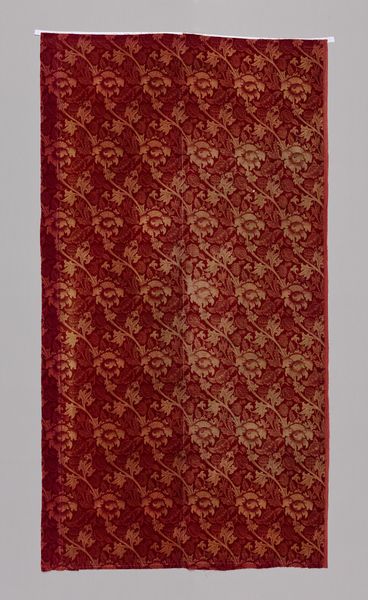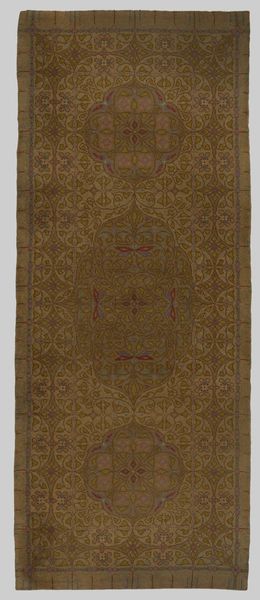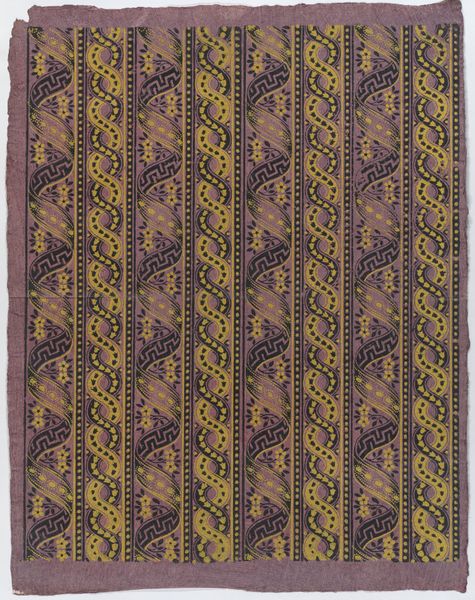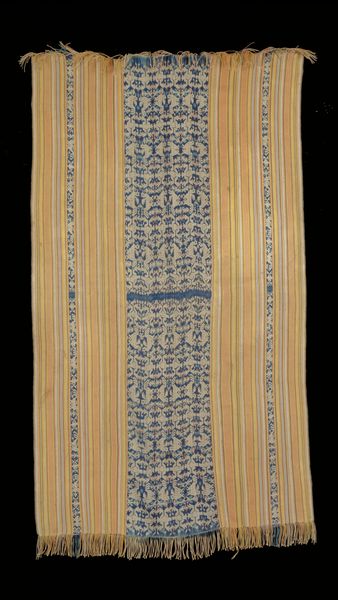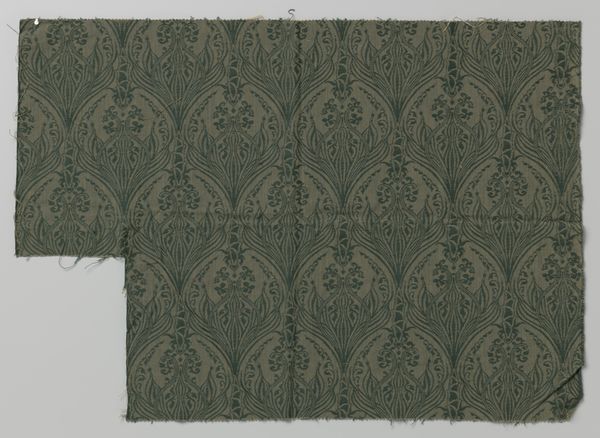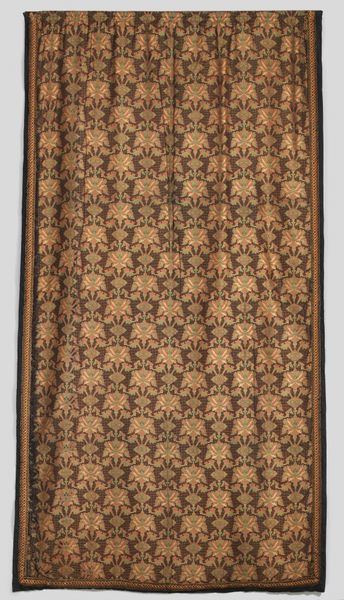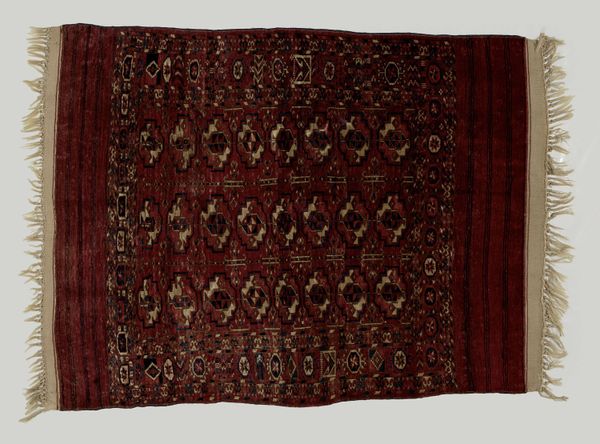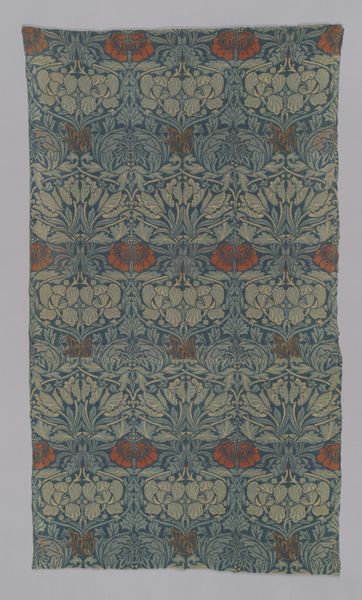
print, etching, textile
#
narrative-art
# print
#
etching
#
textile
#
decorative-art
Dimensions: Overall: 78 x 33 in. (198.1 x 83.8 cm)
Copyright: Public Domain
Curator: This textile work, entitled "Le Loup et l'Agneau" – "The Wolf and the Lamb" – dates from the period 1800 to 1810, and is attributed to Jean-Baptiste Huet I. Editor: My first impression is of an elegant, almost melancholy, repetition. The muted rose tones against the woven texture suggest faded grandeur and a critique of power dynamics rather than an endorsement. Curator: The choice to depict the fable of the wolf and the lamb is hardly arbitrary, and these patterns have layers of encoded meanings. We often interpret this particular scene in literature as a timeless allegory of the oppressor and the oppressed. What readings might you consider from a critical, historical lens? Editor: Well, given the artwork's creation amidst revolutionary echoes and power shifts, the fable serves as a powerful indictment against those in positions of authority who wield control with merciless impunity. It implicitly calls out abuses of power and advocates for the vulnerable. It serves as a pointed reflection on class divisions that pervaded society at that time. Curator: It goes further too. By integrating elements of classical figures and pastoral scenes with vignettes of Aesop’s fable, there is continuity forged with artistic traditions while also infusing them with contemporary socio-political awareness. Even the seemingly innocuous decorative details contribute. Notice the delicate patterns interspersed? They evoke both order and fragile beauty, hinting at underlying tensions threatening stability. Editor: Absolutely. I find myself reflecting on how these visuals might act as social critique during that transformative period, mirroring real-world inequalities, and urging recognition of the humanity of the disenfranchised and targeted groups who consistently have no recourse against state violence. Curator: It shows us the necessity for decoding these artistic expressions within their proper historical and cultural frameworks; such decodings ultimately teach about how art persistently encapsulates the anxieties, yearnings, and aspirations of specific cultures across time. Editor: A vital message conveyed through these beautiful repeating patterns; one about holding systems accountable that allow might to overshadow what is right. The echo of the wolf's triumph resonates, reminding us of ongoing battles for true justice.
Comments
No comments
Be the first to comment and join the conversation on the ultimate creative platform.
